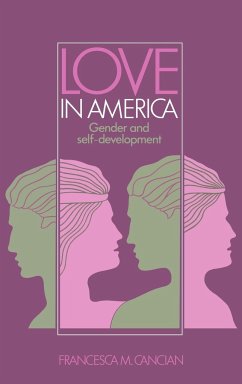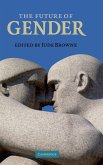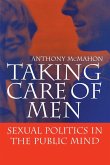In the last twenty-five years, Americans have gained considerable freedom in thier personal lives. Relationships are now more flexible, and self-development has become a primary goal for both men and women. Most scholars have criticized this trend to greater freedom, arguing that it undermines family bonds and promotes selfishness and extreme independence, Francesca Cancian is more optimistic. In this book she shows that many American couples succeed in combining self-development with commitment, and that interdependence, not independence, is their ideal. In interdependent relationships, love and self-development do not conflict, but reinforce each other. Love in America compares 'traditional' forms of marriage with these newer forms of close relationships. Starting with the nineteenth century, Cancian shows how gender roles became polarized, with love, which was identified with emotional expression, no practical help, being the responsibility of women, while self-development was regarded as a masculine concern. These traditional images of love and relationships are still held by many Americans today, even though, as Cancian points out, this can lead to marital conflict and individual stress and illness. By contrast, new images of love, emphasizing self-development for men and women and flexible, androgynous roles, began to emerge around 1900, accelerating in the 1960s. She concludes that this trend to self-development and androgyny will continue, but that whether it will lead to more interdependent relationships, or to more independence and isolation, depends partly on economic and political changes in the wider society. The evidence for Cancian's argument comes from sociological, historical, and psychological sources. Her book will interest readers in these disciplines, as well s appeal to a wide general audience.
Table of contents:
List of figures and tables; Acknowledgments; Introduction; 1. Love vs. self-development; Part I. The History of Love: 2. The feminization of love in the nineteenth century; 3. From role to self: the emergence of androgynous love in the twentieth century; 4. The history of love: theories and debates; Part II. Feminized Love and Its Costs: 5. Feminine and masculine love; 6. Illness and split gender roles; 7. Martial conflict over intimacy; Part III. Androgynous Love: 8. Self-development through androgynous love; 9. Androgynous love in marriage; 10. Friends and relatives; Conclusion; 11. Current trends and future possibilities; Appendices; Notes; References; Index.
Hinweis: Dieser Artikel kann nur an eine deutsche Lieferadresse ausgeliefert werden.
Table of contents:
List of figures and tables; Acknowledgments; Introduction; 1. Love vs. self-development; Part I. The History of Love: 2. The feminization of love in the nineteenth century; 3. From role to self: the emergence of androgynous love in the twentieth century; 4. The history of love: theories and debates; Part II. Feminized Love and Its Costs: 5. Feminine and masculine love; 6. Illness and split gender roles; 7. Martial conflict over intimacy; Part III. Androgynous Love: 8. Self-development through androgynous love; 9. Androgynous love in marriage; 10. Friends and relatives; Conclusion; 11. Current trends and future possibilities; Appendices; Notes; References; Index.
Hinweis: Dieser Artikel kann nur an eine deutsche Lieferadresse ausgeliefert werden.








